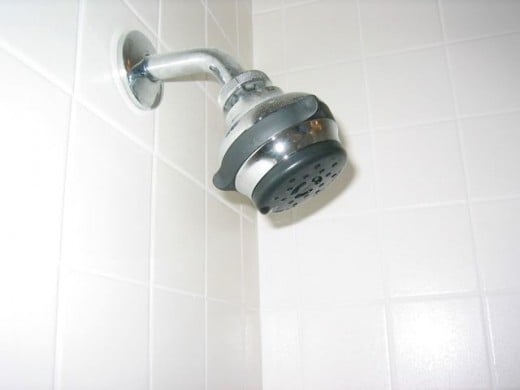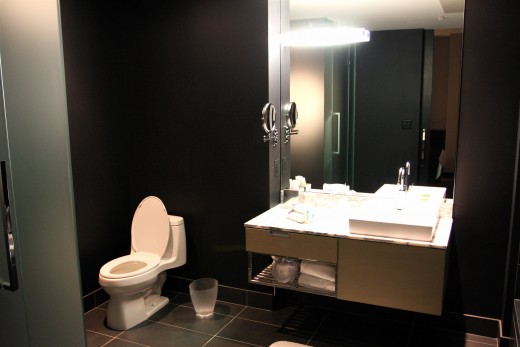Hidden Home Energy Costs - Have You Located Them All
It's Boring, I Won't Lie, But It's Full of Good Information
If you haven't had a professional home energy audit, your house might be nickel and diming you to death in energy costs. This won't be a 10 ways to save energy at home post, instead it's a comprehensive look at every single area where your house is costing you extra cash every day.
While having a professional audit is the best way to find out every single area where your home is losing or wasting energy, you don't have to wait for a professional to take care of many of the culprits. When you see how many there could be, you'll understand just how big a pile of nickels and dimes we're talking about.
So, what are ways to save energy in your own home? Why not start with the major problems first.
Residential Air Leaks

Have you checked your house for air leaks?
One of the biggest energy drains on a home is air leakage. When air leakage occurs, the conditioned air in your home exits through cracks or leaks and is replaced by unconditioned air from the outside. While windows are the number one culprit, there are 15 major places to check for air leaks.
- Attic kneewalls
- Attic access hatches
- Areas around piping and ductwork
- Drop ceilings and soffits
- Stair framing against exterior walls
- Porch roof
- Flue or chimney shaft
- Recessed lighting
- Heating and cooling ductwork
- Common wall between garage and home
- Foundation sill plate
- Windows
- Doors
- Electric outlets
- Exterior wall penetrations
In essence, anywhere your home heating and cooling system runs or any place that the exterior structure of the home has been joined together could develop a leak. Once these leaks have been identified, they can be sealed with caulk, weatherstripping or spray foam insulation. Sealing these leaks could cut your heating and cooling bills anywhere from 5 to 40 percent depending on how many there are in your home. This is just the first step to make home more energy efficient. Start with sealing your attic air leaks.
What is your energy IQ?
view quiz statisticsIs your insulation up to date?
Speaking of insulation; if you haven't checked yours in a while, you could be letting heat escape right through your attic, floor or walls. Heat moves from areas with high temperature to areas of low temperature because the densities of materials are lower at higher temperatures. As the heat moves from one place to another, it tries to reach an equilibrium point. If you don't have insulation in place to slow down this heat movement, the conditioned air in your home will quickly migrate to the outside.
Your insulation needs are completely dependent on where you live. Before checking yours, consult the Energy Star Recommended Levels of Insulation. Once you have determined the most cost effective level of insulation, go and measure what you have. Because insulation is cumulative, you can add to your existing level to meet the suggested one without having to remove anything. And different types of insulation can be used together with no adverse effects. The only caveat is that radiant heat barrier needs to be placed directly against the structural elements of the home to work properly.
There three major areas of your home that should be checked for insulation are the attic, basement or crawlspace, and all exterior walls (including the common wall between the house and garage). Bringing your insulation up to recommended levels is the number one thing you can do to prevent heat loss or gain in your home throughout the year. Since heating and cooling are responsible for upwards of 40 percent of all energy expenditures in the average home, keeping your house insulated can significantly lower your energy costs.
Rolled Batting Insulation

How much difference does a power strip make?
You've probably heard about energy vampires before; those electronics that suck electricity even when they are turned off. Putting them on a power strip can eliminate this by interrupting the power draw with a toggle switch. This is an excellent way to stop the draw from electronics in standby mode, while protecting them from power surges. New advances in energy conservation have resulted in the creation of several different power strips for the specific needs of consumers.
While one or two energy vampires aren't going to break your budget, consider that you probably have 30 or more electronic devices in your home. When all of these devices start creating a phantom load, it can add up. Some of the most common energy vampires include game consoles, DVD players and small home appliances. The U.S. Department of Energy estimates that some homes carry phantom loads that raise the monthly electric bill a full 10 percent.
Types of Power Strips
Remote Controlled Strip
| Surge Protector
| Masterless Strip
| Master Controlled Strip
| Motion Detector Strip
| Timer Strip
| |
|---|---|---|---|---|---|---|
Pros
| control the strip from across the room
| cheap and easy to use
| provides electricty cut off to all devices
| sets one device to turn off all others
| works without needing to hit a swich
| great for charging items overnight
|
Cons
| losing the remote
| only has on/off capability
| all devices must be turned off individually
| most expensive power strip
| doesn't always detect small motions
| needs to be set
|
Best place for use
| entertainment rooms and for outdoor lighting
| in any easily accesible area
| kitchen counters
| entertainment centers and home offices
| bathrooms and kitchens
| bedroom or home office
|
Water Saving Fixtures

Have you heard about WaterSense products?
Making a few changes in your home's water fixtures can have a huge impact on the amount of water you use each day. If you happen to be using the same toilet that was installed in your house in 1992 or earlier, it probably uses between 4 and 5 gallons of water per flush (if you have a much older one it could use up to 9 gallons!). Buying low flow toilets can cut this water use in half. New models use 2.5 gallons per flush or less. Some dual flush toilets can use as little as a single gallon for liquid waste. Of course, if you don't have the cash on hand for a new set of toilets, you can place a few full half gallon jugs in the reservoir to reduce the reservoir capacity and flush volume.
In addition to the toilet, other major water users include the showerhead and faucets. WaterSense shower heads reduce the flow of water to under 2 gallons per minute(gpm). This is far less than the pre-1992 standard 4 to 5 gallon per minute heads and 20 percent lower than the 2.5 gpm models . If you take a 10 minute shower, you'll save 20 to 25 gallons of water, and your water heater won't have to work as hard to maintain temperature.
Water saver faucets can reduce flow rates in your kitchen and bathroom by up to 40 percent. The majority of these faucets are too expensive to consider just for water usage reduction, but if you are going to change your faucet anyhow, look for a WaterSense approved one. Instead of dishing out $100 or more for a new faucet, pick up an aerator for each faucet. They run about $5 to $10 each.
Have you had a heating and cooling tune up?
Your heating and air-conditioning system is a balanced machine. When it goes out of balance, it loses efficiency. Things like soot build-up on gas furnace burners or dust and debris on air conditioner condenser coils can zap the efficiency of your system. If your HVAC system hasn't been professionally maintenance in the last five years, you could see a 10 percent efficiency improvement in your system. Here is a list of some of the things that a professional service should consist of:
- Check that the thermostat is functioning properly
- Clean and adjust the furnace burner assembly
- Clean the furnace ignition assembly
- Check the exhaust air for proper discharge levels
- Examine the heat exchanger and plenum for damage or corrosion
- Evaluate the flue draft
- Test all furnace safety controls
- Inspect the gas piping
- Clean or replace air filters
- Ensure optimal air flow
- Tighten all electrical connections
- Clean and lubricate all moving furnace parts
- Clean debris from the condensate drains
- Clean and adjust the blower motor and fans
- Check the blower motor belt
- Check thermostat calibration and settings
- Evaluate refrigerant pressure and top off if necessary
- Inspect and clean the evaporator coil
- Clean the condenser coil
- Check for proper clearance around the unit
Is a programmable thermostat going to make a difference?
A programmable thermostat can make a difference if it is used correctly, and your lifestyle fits into a particular category. If you are a stay at home mom or constantly have people coming and going from the house, a programmable thermostat isn't going to do a thing for you. However, if you have a set schedule that leaves the house empty for several hours at a time, you could potentially save up to 15 percent on your heating and cooling bills.
Follow these instructions to get the most out of your programmable thermostat without sacrificing comfort.
- Determine times during the week when people are not in the home. Disregard any times that are not at least two hours long.
- Program the thermostat back 10 to 15 degrees from the normal setting for each instance. Start from the moment that the house is unoccupied and return it to normal temperature 30 minutes before the first person is scheduled to arrive home. This will give the HVAC system time to bring the house to the desired temperature.
- Set the thermostat to back 10 degrees for the overnight hours during the winter. You will be snug in your bed and oblivious to the drop in temperature. If you do find yourself waking up in the middle of the night due to the temperature change, try inching the thermostat up a few degrees until your find the right temperature for your body to rest.
A programmable thermostat will work best with a blown air system. Radiant heat systems, electrical resistance heaters and heat pumps are not efficiently controlled in the same manner, although there are new thermostats on the market that cater to specific heating and cooling systems.
Is your heating and cooling system the right size?
Today's heating and cooling systems are designed to work specifically with the space of your home in mind. Older homes often had larger units installed to make up for the air leakage inherent in their designs. If you are sealing up your home and making it more energy efficient, your heating and cooling system might end up being too large for the volume of air in your home. This is one case where bigger isn't better.
A large heating and cooling system can result in high operating costs and a shortened lifespan for the unit because of the frequent on/off cycling that happens. These systems change the temperature in the home quickly and often result in high humidity during the summer months. Once you have sealed up the major leaks in your home (especially in the ductwork), consulting a professional about your HVAC equipment is a good idea. If it is over 10 years old, there's a good chance that a new unit will be far more efficient. Newer units have efficiency ratings of over 90 percent while older ones hover between 60 percent and 70 percent.
If you live in an area where heating is essential for half the year or more, this could be a great investment. If you happen to live in the south, purchasing a new air conditioner could achieve similar results. While these are not cheap fixes, they are some ways to save energy at home that will give over 100 percent return on your investment over their lifetimes.
An Over-sized Furnace

When do you run the dishwasher and do the laundry?
Many of the appliances we depend on to make our lives easier produce excess heat while in use. The dishwasher and washer and dryer are two of the biggest culprits. Some people falsely believe that these appliances are water and energy wasters. The truth is that washing machines and dishwashers are far more environmentally friendly than washing by hand. The dryer, however, is not nearly as efficient as hanging your clothes out on a line when possible.
During the summer, running these heat producing appliances early in the morning or after the sun has gone down will reduce the work that your air conditioner needs to do to keep your house cool. You can also turn off the heat dry setting and allow your dishes to air dry. This will both save electricity and eliminate radiant heat. During the winter, you can run these same appliances during the day to help your furnace heat your home.
Again, this isn't a huge change, but every little bit helps when you are reducing your energy costs.

Have you tried any of these bathroom tips?
- Turn off the water when brushing teeth and shaving – leaving the tap running for one minute wastes 2.5 gallons of water. Multiple that by the number of people in your home, twice a day, and you could see waste for a family of 4 reaching 7300 gallons a year.
- Put a timer in the shower – limiting showers to 5 minutes can significantly reduce the amount of water your water heater has to heat. If you have a WaterSaver approved showerhead, every extra minute spent in the shower costs 2.5 gallons of water. Again, a family of 4, cutting shower time from 15 minutes to 5 with the help of a timer, can save 14,600 gallons of water a year.
- Change to LED bulbs – incandescent bulbs are about to become illegal in the U.S., and the major trend has been toward compact fluorescent bulbs. Unfortunately, compact fluorescents aren't the best alternative because they contain Mercury. They also lose lifespan when they are constantly turned off and on. LEDs, although more expensive up front, last much longer and use half the energy of compact fluorescents.
Now that you have several weekends worth of work ahead of you, and you know how to save energy, get to work. Every little 20 minute fix you make helps you keep money in your pocket in the long run. Whatever you do don't blow your budget like the celebrities featured in Mo Money Mo Bathrooms!








